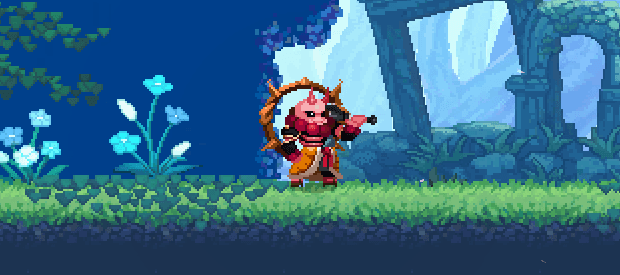top of page
GameRate: Video Game Review Platform
CONTEXT
HCD Thesis project helping players discover new games, share their experiences, and build community.
Gamers and developers from marginalized backgrounds often encounter a hostile and exclusionary gaming culture, where their contributions receive little recognition. This makes it difficult for them to discover meaningful games or feel included within the broader gaming ecosystem.
Using the Human-Centered Design framework, I created a game review platform that helps players engage with gaming marketplaces more intentionally: discovering indie titles, sharing experiences, and forming like-minded communities.
TEAM
CGU Game Lab— 1 Project Advisor,
2 UX/UI Design Consultants
TIMELINE
Aug 2024 - May 2025
ROLE
Lead UX Researcher — Project Planning, User Research, Design Mentoring


01
The Challenge
The following quotes are taken from a real monster-fighting game hosted on Steam in 2025.
The story is a retelling of my game design professor's experience releasing her first indie game.
02
Key Outcomes
1. Interviewed 25+ gamers and devs, uncovering pain points around affordability, accessibility, and toxic community spaces.
2. Prototyped and tested three product concepts, synthesizing qualitative and quantitative insights to inform iterations.
3. Delivered final design that increased player trust and game discoverability with >90% user satisfaction rate.
The comments used in the story are screenshots from a real monster-catching game hosted on Steam today, which not only shows the prevalence of misogyny and racism in gamer culture, but also the lack of content moderation on mainstream game marketplaces.
03
Product Glimpse

The comments used in the story are screenshots from a real monster-catching game hosted on Steam today, which not only shows the prevalence of misogyny and racism in gamer culture, but also the lack of content moderation on mainstream game marketplaces.
04
Human Centered Design Process

Before starting the HCD process, I conducted desk research to better understand the stakeholders, politics, and cultural forces that shape the gaming industry. This allowed me to ask more meaningful questions during empathy interviews.
The comments used in the story are screenshots from a real monster-catching game hosted on Steam today, which not only shows the prevalence of misogyny and racism in gamer culture, but also the lack of content moderation on mainstream game marketplaces.

The Gaming Industry Today

Despite the evolving demographics, mainstream game development remains heavily male-dominated. Large publishers continue to prioritize games modeled after past successes, overwhelmingly centering male violence. As critic Anna Anthropy stated, if we judged humanity by video games alone, it would seem that life is about "shooting men and taking their dinner orders."
GamerGate and its legacy

GamerGate was an online harassment campaign that started in 2014, driven by a backlash against feminism, diversity, and "wokeness" in gaming. It involved the targeted harassment of women and other marginalized creators in the industry. Over 10 year's later, GamerGate ideologies are still prevalent.
Indie Games Fight Back
The rise of free, accessible game-making has empowered individuals previously alienated by the industry to make games. Independent games have become mediums for self-expression, cultural critique, and social impact, challenging the traditional norms of the gaming industry. Despite this, developers still face harassment, exclusion, and limited visibility on mainstream platforms.



How is the market currently addressing these user needs? I compared the features of top game discovery platforms today: AAA marketplaces, Indie-focused marketplaces, and social platforms.
Key Takeaways


15 Empathy Interviews

I conducted one-on-one empathy interviews with 15 participants, focusing on open-ended, story-seeking conversations that allow participants to share experiences, emotions, and deeper needs.
Online Community Outreach

I engaged with gaming communities online, explaining my project and inviting users to reply to the post about their experiences with indie game discovery and creation. These stories helped surface experiences from gamers and developers outside my immediate college network.
User Demographics
Of the 23 users I engaged with across methods, 12 identified as indie game developers and 11 identified as gamers. All of the players I interviewed came from backgrounds historically underrepresented in gaming, including international students, people of color, women, and people with disabilities.


Discoverability Factors

The histogram above shows how many times various factors were mentioned by players in regards to their likeliness to try a new game. Many players emphasized that affordability heavily impacts their willingness to try a new game, particularly among college students with limited budgets. Following cost, players mentioned recommendations from streamers, gaming websites, and friends as major influences.
Representation and Inclusion

Many users noted the lack of disabled, queer, multilingual, and POC characters in the games they encounter, where others highlighted how stereotypes about what makes a "real gamer" alienate those who enjoy indie games. From the interviews and online outreach, I learned that players value affordability and inclusion in community spaces.
User Persona 1: Player

User Persona 1: Developer

These personas helped me go beyond surface-level needs and encapsulate my users' emotional experiences. Emile's search for belonging and Rosy's fight for visibility highlight how hostility in gaming spaces impacts marginalized players and creators.

Generating 100 Solutions

Most players still depend on large marketplaces like Steam despite the presence of trolls. Rather than designing an entirely new platform, my ideas aimed to make mainstream platforms more welcoming, meeting users where they already are rather than asking them to abandon the platforms they rely on.
Co-Creation
Rather than positioning users as passive participants, I involved them as active collaborators throughout the design process. Co-designing helps build trust and increases the likelihood of real community buy-in. Users came up with their ideal solutions to problems surrounding game discovery.






After testing three ideas, I pursued the "Reviewer Reward System" because it received the strongest positive reactions and inspired the most specific, actionable feedback. This idea directly addresses the needs of my two user personas by promoting a more intentional space for indie game discovery.
Wireframe

To further develop the idea, I added features like a stats overview and level progress tracker, a featured review, favorite games, and a points bank. It also has a menu where users can access all of their reviews, their wishlist, and the shop where they can redeem their points.
User Testing




User Profile and "Leave a Review" Screens
The final profile screen designed to motivate participation by showing key stats like total XP, achievements, and followers. This solution blends identity, social connection, and gamification to make reviewing feel more meaningful. The “Leave a Review” flow, encourages meaningful feedback about the gameplay. Users give a star rating, optionally provide written feedback, and rate traits like visuals or accessibility using quick 3-point scales.
05
Learnings
-> Continuous user involvement is key: Including users throughout the process, even in POV development and prototype design, helped build trust and genuine connection.
-> Preparation leads to better conversations: Doing research before interviews helped me ask specific questions and understand the context behind users’ frustrations.
-> People want to help: I was delighted by how invested users were in the project and how generously they shared their stories, challenges, and ideas. Even users I had only ever met online were willing to share their experiences and get involved.
bottom of page

